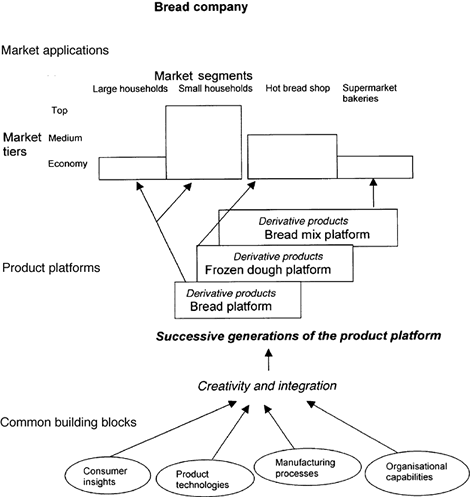FOOD
PRODUCT DEVELOPMENT
Mary Earle, Richard Earle and Allan Anderson |
| Loading
|
|
||||
|
|
Part
I,
Chapter 1
Keys to new product success and failure 1.1.5 Product platforms A useful method of organising food products is to link them on product platforms (Meyer and Lehnerd, 1997). This is based on the fact that families of products can be grouped together because they have a common architecture or common morphology (Schaffner et al., 1998). Product morphology is the breakdown of a product into the specific characteristics that identify it to the consumers, by analysis of the product family and the individual product. A product platform is formed by a set of linked products, which are distinctive but also have a strong common linkage, such as fresh fruit juices, nutritional breads, cold breakfast cereals for children. The product platform is defined as 'a set of subsystems and interfaces that form a common structure from which a stream of derivative products can be efficiently developed and produced' (Meyer and Lehnerd, 1997). Product platforms are a useful basis for developing a product strategy for the company, and also for creating ideas for new products. If a new platform is started, derivative products can be based on this platform, and then the next generation of products is started on a new but related platform. They can be considered as Generation 1, Generation 2, Generation 3 of the Product Family. In Case Study 1, Chapter 7, the development over 15 years of a new product platform in the apple industry is described. The first stage is to identify the present product platforms and to show how they have developed in the past, clearly showing the generations of product platforms and the derivative products on each platform. It would be useful if these were identified as successful and failed product changes, so that a historical picture could be built up as a basis for the future. The second stage relates each product platform to the different market segments to which the products were aimed and to which they were finally related in sales. The third stage identifies the building blocks that were used to achieve these changes in the product platforms: consumer insights, product technologies, manufacturing processes and organisational capabilities. An example of a general systematic grouping is shown in Fig. 1.2.  Fig. 1.2 Systematic grouping of food products for use in product development (Source: After Meyer and Lehnerd, 1997). The company can combine this product knowledge with knowledge of the predicted social and technological changes to identify the changes in the product mix for the near and distant futures. |
|
 |